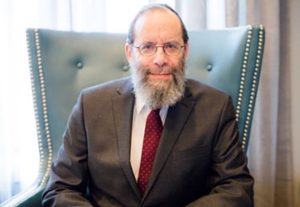How do we create a society that expresses its own values while making room for others? And just who are we protecting by forcing women to take their clothes off at the beach?
Rabbi N. Daniel Korobkin
Beth Avraham Yoseph Congregation, Toronto
Rabbi Lisa Grushcow
Temple Emanu-El-Beth Sholom, Montreal
Rabbi Grushcow: The burkini controversy is in the news. Certain mayors in France have banned what they call, “beachwear which ostentatiously displays religious affiliation.” Clearly they are not talking about bathing suits with Magen Davids on them. For those of us in Quebec, this brings back memories of the debate around the Charter of Quebec Values, secularism, and the proposed ban on the wearing of religious symbols.
In contrast, I am reminded of the words of the Israeli consul general here in Montreal, who spoke recently at our Pride Shabbat service. He mentioned how Tel Aviv has a gay beach right next to an Orthodox beach, which is segregated by gender, and he cited it as an example of the diversity in Israeli society.
After a summer spent studying in Israel, these issues are very much on my mind. How does one create a society that expresses its values while making room for different behaviours and beliefs? Who gets to decide who is “us” and who is “them”? Is a secular society really protected by making a woman take her clothes off at the beach?
What Jewish teachings might guide us in thinking about how to approach these questions in terms of religious/secular pluralism and how we dress?
Rabbi Korobkin: Alexis de Tocqueville once said, “Nothing is more wonderful than the art of being free, but nothing is harder to learn how to use than freedom.” One of the cornerstones of western democracy is freedom of religion, provided that those religious beliefs do not impinge on the freedoms of others.
This new French ban is as theocratically odious in its form as the policies of those countries that ban bikinis. In the end, there’s no difference between the oppressive upholding of religious values and the oppressive upholding of secular values.
As it was during the Quebec Values controversy, this new ban is personal for people of all faiths. Many Orthodox women wear shvimkleit, the Jewish counterpart to the burkini. And what about the non-religious woman who may wish to dress modestly at the beach? Maybe she has a scar she doesn’t wish to display, or has a poor body self-image.
This is such a bizarre and sad new manifestation of the cultural distortions that have manifested in the last few years. I’m proud of the fact that Israel has no tolerance for this kind of nonsense.
Rabbi Grushcow: Agreed. Burkini bans aside, I’m curious about how issues of modesty play out in our own communities. I once wrote a responsum called What Not to Wear: Synagogue Edition, exploring what principles are relevant to what we liberal Jews wear in synagogue. What is most troubling to me is the traditional assumption that women distract and men are distracted; therefore there is pressure on women and girls, either to cover up or reveal.
I don’t think legislation is the right path – personal choice is the cornerstone of a shared, secular society. But even in spaces like pluralistic Jewish schools, I am concerned that girls’ bodies still are over-sexualized by teaching about what they can and cannot wear when they just want to be comfortable in shorts and T-shirts.
At the same time, I worry about the bat mitzvah girls who feel pressured into strapless dresses. And don’t get me started on how much inappropriate attention is paid to what female rabbis wear! These issues always are played out on one gender more than the other, and I think we need to take that seriously.
Rabbi Korobkin: Wait a minute. You’re suggesting that establishing dress codes in religious schools and limiting girls to modest clothing contribute to their “over-sexualization”? Sorry, but both history and data from modern studies indicate that teaching girls to respect their bodies by dressing modestly is proper and healthy. The real contributor to our over-sexualized society is the objectification of women as sex objects that began in the 1960s with the sexual revolution, and has only intensified since then.
I sympathize with a female rabbi who has to worry about what people – especially men – will be thinking about during her sermon, and especially when those thoughts revolve around her clothing and physical appearance. Then again, maybe the Orthodox policy of only having male rabbis in the pulpit has some wisdom to it!






